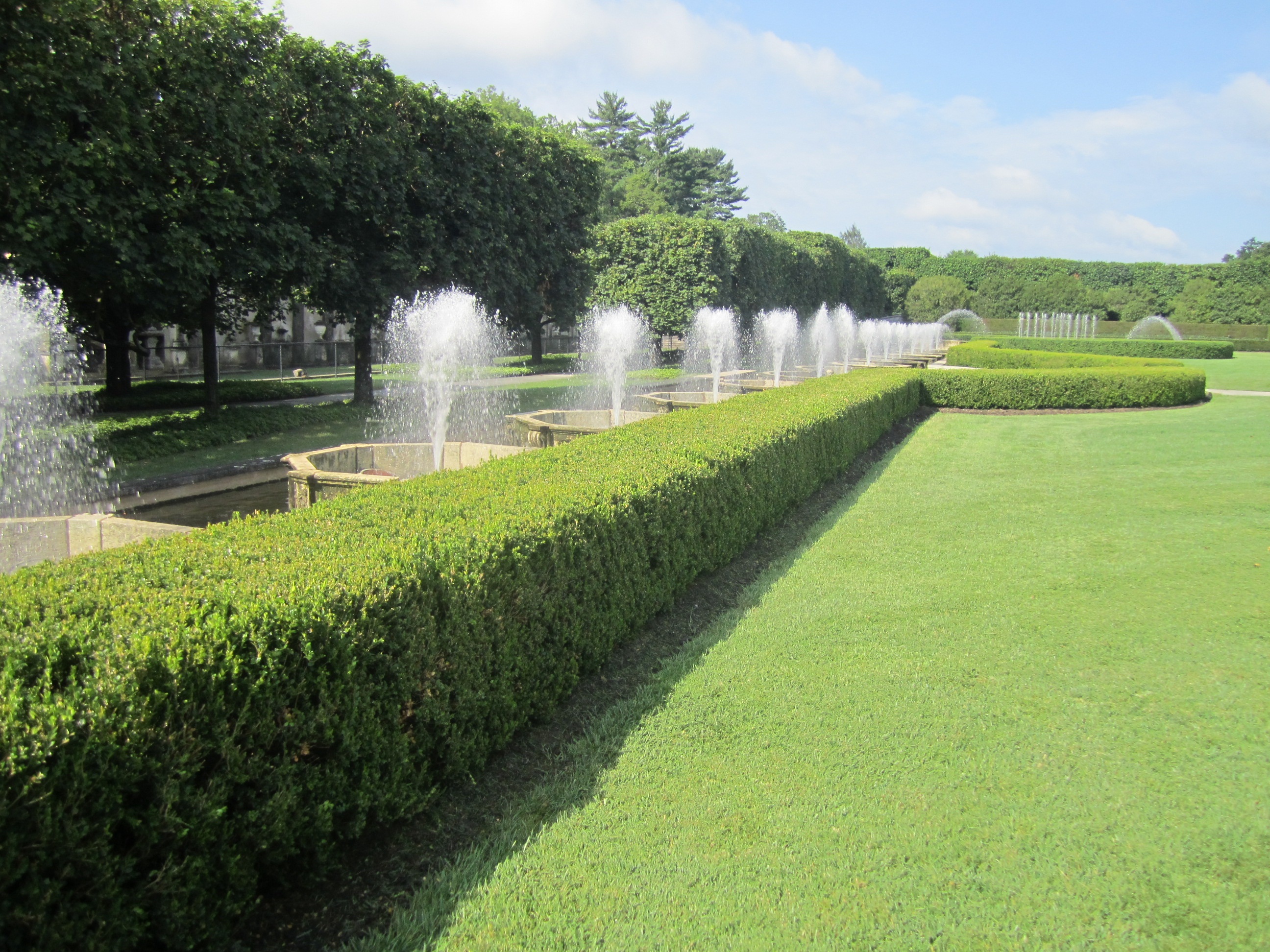Boxwood Blight Quarantine

Healthy Boxwood Picture of healthy boxwood plantings at Longwood Gardens, Kennett Square, PA. Picture courtesy Longwood Gardens.
Boxwood Blight: A Regulated Plant Disease in PA
Boxwood blight, a disease that affects the popular landscape shrub, was first found in Pennsylvania in 2012. This disease is caused by the fungal species Calonectria pseudonaviculata, and can result in complete leaf loss and blight of the plant. The disease cannot be identified from visual symptoms, due to the fact that similar symptoms can be the result of other issues. It is necessary to have a laboratory confirm the presence of the fungus to diagnose boxwood blight. Spores of the fungus can be spread by insects, animals and horticultural tools. The fungus can survive in leaf litter for years; control measures for the disease include destruction of the infected material, and blending protectant chemical treatments with cultural practices.
The Pennsylvania Department of Agriculture has declared boxwood blight to be a “regulated pest.” The goal of regulating this disease is to stop its artificial spread by human activities, particularly the propagation and distribution of infected boxwood and other host plants such as sarcococca and pachysandra. On June 25, 2016 the Department implemented a Quarantine to prevent the introduction into or movement of Boxwood Blight in Pennsylvania.
If you suspect you may have symptomatic boxwood plants, please contact your local Pennsylvania Department of Agriculture Regional Office or your Penn State Cooperative Extension County Agent. Replanting with boxwood, pachysandra or sarcococca is not recommended, if the previous plants had Boxwood Blight. Spores from diseased material may be in the soil on leaf debris and may be viable for 10 or more years.
Homeowners and landscapers should sanitize tools, equipment and gloves when working with boxwood especially during the infectious period between July and October. An appropriate sanitizing solution to clean tools and equipment should be applied between pruning boxwood and after completing all pruning and cleaning. Removal and proper disposal of leaf debris will help limit the spread of the spores which carry the disease. Clothing should be thoroughly washed.
Boxwood, pachysandra and sarcococca should not be composted if removed due to Boxwood Blight. Penn State University is currently studying the effects of composting on the spores that cause disease.
This disease was found in the United States in 2011. Currently there are several studies being conducted to determine appropriate treatment methods and resistant varieties. To date no cure for the disease has been determined. Protectant fungicide sprays can prevent healthy plants from becoming infected, but will not cure a plant that is already disease. Fungicide sprays may only mask the problem until conditions are right for disease expression.
Businesses which produce or sell boxwood or other host material may wish to participate in the "Boxwood Clean Program". This program recommends best management practices to limit the possibility of introduction and spread of the disease for growers, wholesalers and retailers.
If you wish to participate in the program, please contact your local Pennsylvania Department of Agriculture regional office.
Pictures of symptoms:

For more information on Boxwood Blight:
Virginia Cooperative Extension
CT Experimental Station
Horticultural Research Institute (An American Hort Foundation)
NC State University
PLNA
Participants in Boxwood Clean Program in PA
Conard-Pyle Company